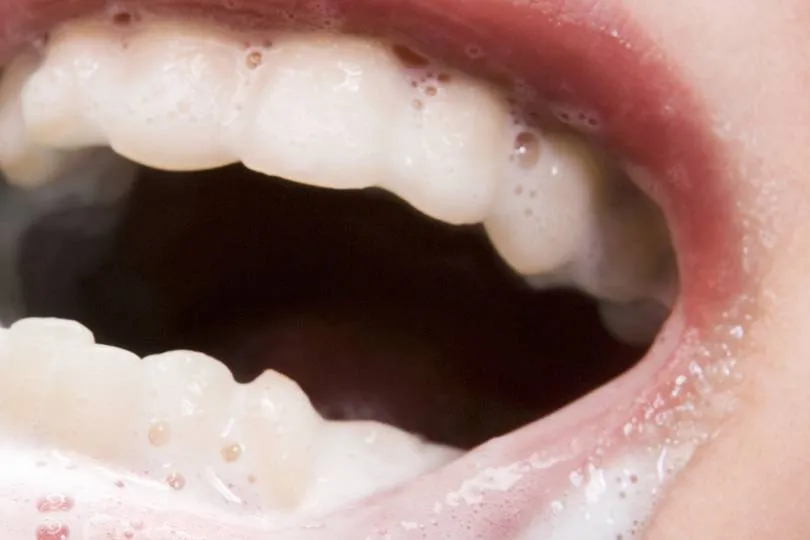Understanding Baking Soda Teeth Whitening
Baking soda and water teeth whitening has become a popular DIY method for achieving a brighter smile. This practice involves using a mixture of baking soda (sodium bicarbonate) and water as a toothpaste alternative or supplement. While the concept is simple, understanding its principles, effectiveness, and potential drawbacks is crucial before incorporating it into your oral hygiene routine. This approach appeals to those seeking a cost-effective and accessible way to enhance their teeth’s appearance. The primary goal is to remove surface stains and achieve a whitening effect without resorting to expensive professional treatments or commercial products. However, it’s essential to approach this method with realistic expectations and a clear understanding of its limitations.
How Baking Soda Whitens Teeth
Baking soda whitens teeth primarily through its mild abrasive properties. It helps to remove surface stains caused by foods, drinks (like coffee, tea, and wine), and tobacco. The tiny particles of baking soda act as a gentle scrubbing agent, dislodging stains that adhere to the enamel surface. This physical action gives the teeth a cleaner appearance. Additionally, baking soda has a slightly alkaline nature, which can help neutralize acids in the mouth. Acids, often produced by bacteria, contribute to enamel erosion and can exacerbate staining. By buffering these acids, baking soda may help to create a healthier oral environment and potentially reduce the likelihood of further staining. However, it is important to note that baking soda does not change the intrinsic color of the tooth enamel; it only addresses surface stains.
The Science Behind It
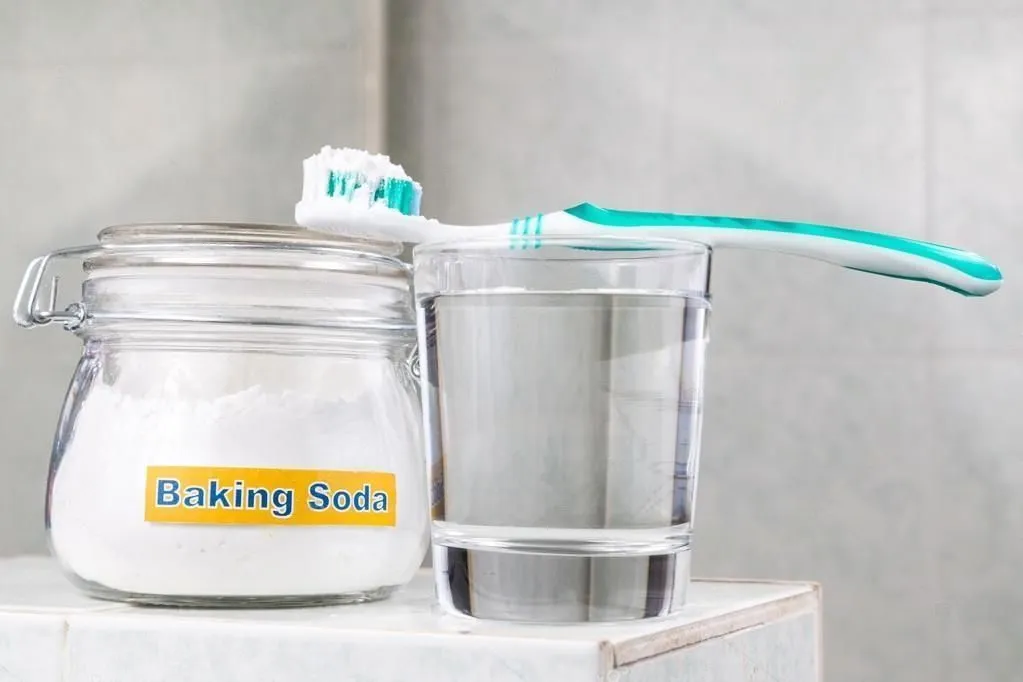
The effectiveness of baking soda in teeth whitening is supported by scientific principles. Sodium bicarbonate, the main component of baking soda, has been shown to have mild abrasive qualities, allowing it to scrub away stains. Studies have indicated that baking soda can effectively remove plaque and improve the overall cleanliness of teeth. However, it’s important to emphasize that the abrasive nature of baking soda is the key to its whitening effect. This mechanism differs from professional whitening treatments, which use chemical agents like hydrogen peroxide to penetrate the enamel and alter the intrinsic tooth color. Baking soda’s action is limited to the removal of external stains. The scientific basis underscores the importance of using baking soda cautiously, as excessive abrasion can lead to enamel erosion.
Effectiveness and Limitations
While baking soda can be effective in removing surface stains, its whitening capabilities are limited. It works best on extrinsic stains, such as those caused by coffee, tea, or smoking. The results are often subtle, and individuals may see a slight improvement in tooth brightness over time. However, baking soda cannot change the inherent color of the teeth, which is determined by genetics and the thickness of the enamel. For more significant whitening, professional treatments or stronger over-the-counter products are necessary. The effectiveness also depends on factors like the type of stains, the frequency of use, and individual oral hygiene habits. It’s important to have realistic expectations; baking soda is not a substitute for professional dental care, and it may not produce dramatic whitening results.
How to Prepare Baking Soda and Water Mixture
Creating a baking soda and water mixture is straightforward. The standard ratio is typically 1 part baking soda to 2 parts water. Start with a small amount of baking soda, usually about a half teaspoon. Add water gradually, stirring until a paste forms. The consistency should be similar to that of regular toothpaste—not too runny and not too thick. Some people prefer to add a few drops of water at a time to achieve the right consistency, but the key is the amount of baking soda to water. It is important to make the mixture fresh each time you brush your teeth to ensure it is at its optimum effectiveness. Using too much baking soda can increase abrasiveness, so sticking to the recommended proportions is advisable. Make sure that all the baking soda is dissolved in the water to prevent the teeth from being damaged by the larger particles.
Step-by-Step Guide to Application
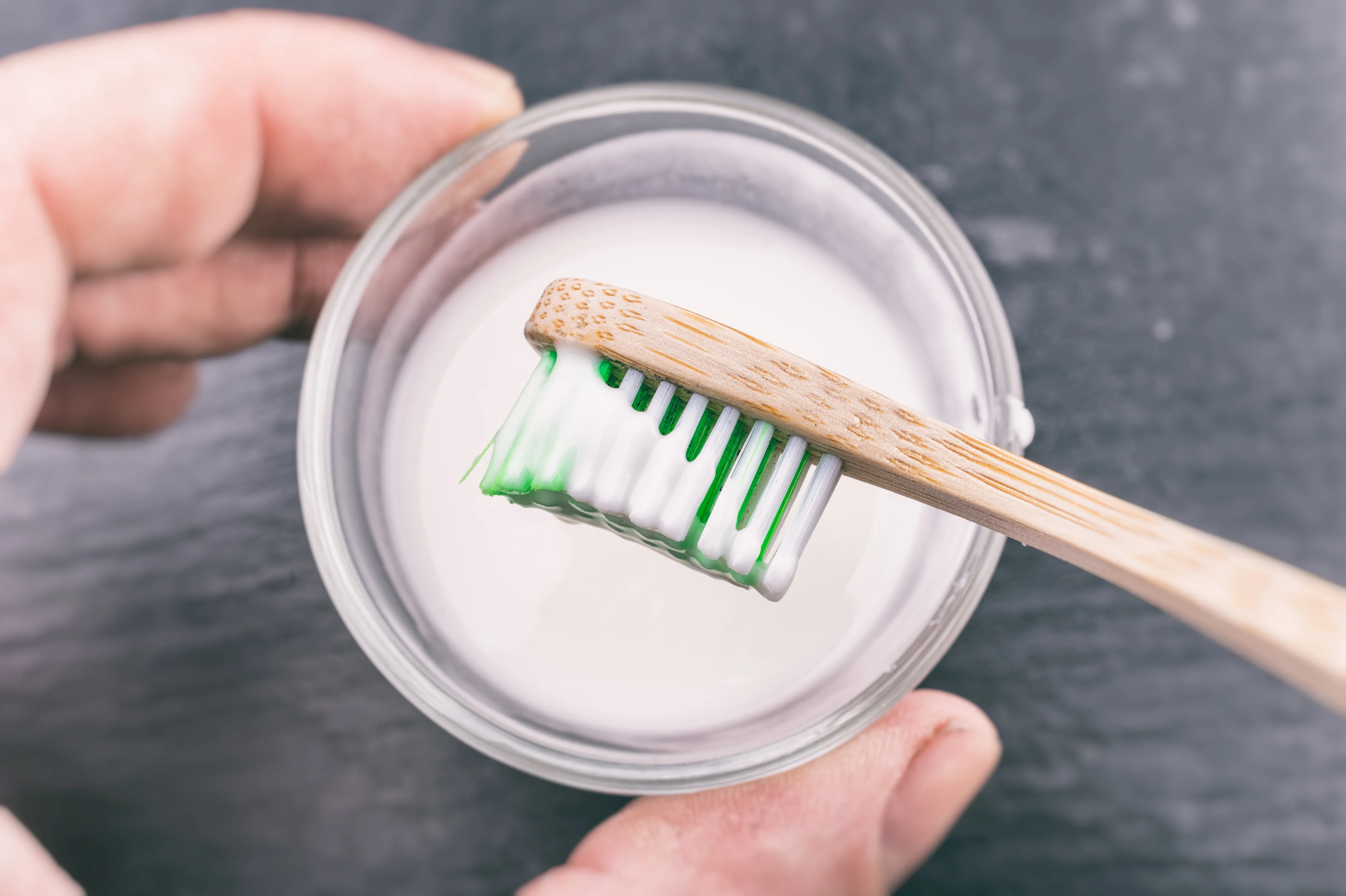
To use the baking soda and water mixture, first, wet your toothbrush. Dip the bristles into the paste, ensuring they are coated evenly. Brush your teeth gently using small, circular motions, similar to how you would brush with regular toothpaste. It’s essential to avoid applying excessive pressure, as this can damage the enamel. Focus on brushing each tooth surface, including the front, back, and chewing surfaces, for about two minutes. After brushing, rinse your mouth thoroughly with water to remove any remaining paste. Many people like to rinse with a separate mouthwash to enhance the overall results, and for a more refreshing experience. Follow this routine regularly, taking into account the recommended frequency and duration to prevent any potential side effects. Make sure you use a soft-bristled toothbrush to avoid damaging the teeth.
Proper Brushing Technique
Proper brushing technique is crucial when using baking soda. The goal is to remove surface stains without damaging the enamel. Use a soft-bristled toothbrush to minimize abrasion. Apply gentle pressure, letting the bristles do the work. Avoid scrubbing harshly or using a back-and-forth motion, as this can wear down the enamel over time. Instead, use small, circular motions, ensuring that you reach all surfaces of your teeth. Brush for at least two minutes, covering all areas of your mouth. This includes the outer surfaces, inner surfaces, and chewing surfaces of each tooth. Take your time and be thorough. It is essential to brush the gum line to remove plaque and prevent gum disease. Proper technique ensures effective cleaning while minimizing the risk of any harm.
Frequency and Duration
It is recommended to use baking soda and water as a teeth-whitening method sparingly. Dentists generally advise against using it daily due to its abrasive nature. A safe frequency is typically once or twice a week. Overuse can lead to enamel erosion and increased tooth sensitivity. The duration of brushing should be the same as with regular toothpaste, approximately two minutes. It’s essential to monitor your teeth for any signs of sensitivity or damage. If you experience any adverse effects, reduce the frequency or discontinue use. Consulting your dentist is always recommended to discuss your oral hygiene routine and ensure that it is appropriate for your specific needs. Combining the use of baking soda with a fluoride toothpaste can help protect against enamel damage. This way you can have both the benefits and the protection.
Potential Benefits of Baking Soda Whitening
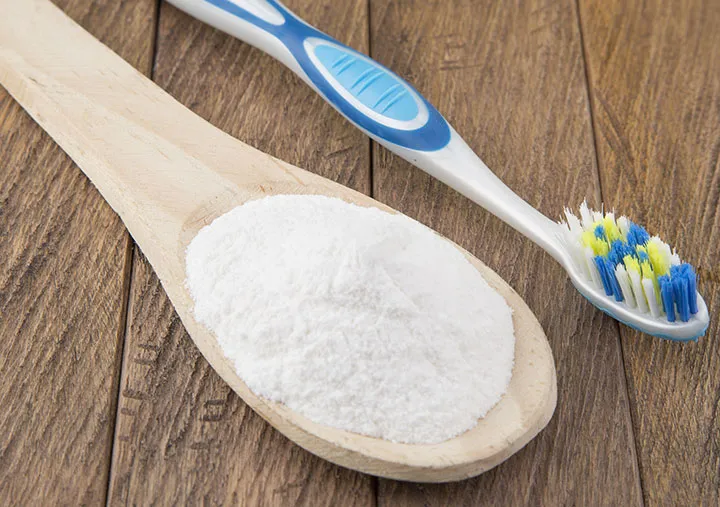
Baking soda and water teeth whitening offers several potential benefits. Many people find that it helps to remove surface stains, leading to a brighter smile. It is a cost-effective alternative to expensive teeth-whitening treatments. Also, baking soda has mild antibacterial properties, which can help to freshen breath and improve oral hygiene. Although the whitening effect is often subtle, the results can be noticeable, particularly for individuals with light staining. The ease of preparation and use makes it an accessible option for those seeking a DIY approach to teeth whitening. The benefits are most pronounced for those who regularly consume staining foods and drinks. However, it is important to consider potential risks before incorporating this into your routine.
Improved Stain Removal
The primary benefit of baking soda for teeth whitening is its ability to remove surface stains. These stains often come from coffee, tea, wine, and other foods and drinks. The mild abrasive action of baking soda helps to scrub away these stains, leaving the teeth looking cleaner and brighter. While it does not change the inherent color of the teeth, the removal of stains can noticeably improve the overall appearance. Regular use, within recommended limits, can help to prevent the build-up of new stains. The degree of stain removal varies based on the type and extent of the staining, as well as individual oral hygiene practices. Consistent brushing can result in a gradual improvement in the teeth’s brightness, leading to a more confident smile.
Fresher Breath
Baking soda has natural properties that can help neutralize acids in the mouth, which often cause bad breath. It can also help to reduce the bacteria that contribute to odor. This creates a fresher and cleaner oral environment. Many people report a noticeable improvement in breath freshness after using baking soda. The effect is primarily due to its alkaline nature and ability to reduce bacterial activity. While baking soda is not a substitute for proper oral hygiene, it can serve as a complementary component in a routine designed to combat bad breath. Using baking soda can be a welcome addition for anyone looking to improve their overall oral hygiene and maintain a more confident social presence.
Cost-Effectiveness

One of the biggest advantages of using baking soda for teeth whitening is its cost-effectiveness. Baking soda is inexpensive and readily available in most households. This makes it an accessible alternative to expensive professional treatments or commercial whitening products. The simplicity of the method also saves money by eliminating the need to buy specialized products. This can be particularly appealing for individuals on a budget or those who prefer natural and economical options. While the whitening results may not be as dramatic as some other methods, the low cost makes it a practical choice for those looking to improve their smile without a significant financial investment.
Risks and Side Effects to Consider
Despite its potential benefits, using baking soda for teeth whitening carries some risks and potential side effects. The abrasive nature of baking soda can be harmful if used excessively or with too much pressure. It is important to be aware of these risks before incorporating baking soda into your oral hygiene routine. Careful consideration, along with moderation, is crucial to prevent any lasting damage to the teeth and gums. Consulting with a dentist before starting to use baking soda is recommended to discuss individual risks and how best to minimize them.
Tooth Sensitivity
One of the most common side effects of using baking soda for teeth whitening is increased tooth sensitivity. This is because the abrasive action of baking soda can wear down the enamel over time, exposing the dentin underneath. Dentin contains tiny tubules that lead to the nerve of the tooth, and when these tubules are exposed, the teeth become more sensitive to hot, cold, sweet, or acidic foods and drinks. Individuals with pre-existing sensitivity are particularly vulnerable. If you experience increased sensitivity, reduce the frequency of using baking soda or discontinue use and consult your dentist. The use of fluoride toothpaste can help to remineralize the enamel and reduce sensitivity, so use these types of products.
Enamel Erosion

Enamel erosion is a significant risk associated with the overuse of baking soda for teeth whitening. Enamel is the hard, protective outer layer of the tooth. Excessive brushing with abrasive substances like baking soda can gradually wear down the enamel, making the teeth more susceptible to cavities, staining, and sensitivity. This erosion can also change the shape and appearance of the teeth, making them appear more transparent or yellow. Once enamel is lost, it cannot be replaced naturally. Preventing enamel erosion is crucial for maintaining good oral health. Moderation and proper brushing techniques are essential to minimizing this risk. If you notice any signs of enamel erosion, such as increased sensitivity or changes in tooth appearance, discontinue using baking soda and consult your dentist.
Gum Irritation
Using baking soda can sometimes lead to gum irritation. The abrasive action can irritate or inflame the delicate gum tissues, particularly if you brush too vigorously. Signs of irritation include redness, swelling, and bleeding. The risk is higher if you have pre-existing gum issues or sensitive gums. If you experience any gum irritation, it’s important to reduce the frequency of using baking soda, brush gently, and make sure to use a soft-bristled toothbrush. In severe cases, consult your dentist, who can assess your gums and recommend appropriate care. Maintaining healthy gums is essential for overall oral health, and any irritation should be addressed promptly to prevent further complications.
Alternatives to Baking Soda Whitening
If you are looking for alternatives to baking soda for teeth whitening, various options are available, ranging from professional treatments to over-the-counter products. These alternatives offer different levels of effectiveness and may be more suitable for individuals who want more significant whitening results or those concerned about the potential risks of baking soda. It’s important to consider your specific needs, preferences, and dental health when choosing an alternative. Consulting your dentist is the best way to determine the most appropriate whitening method for you. This way, you can achieve the desired results safely and effectively.
Professional Teeth Whitening
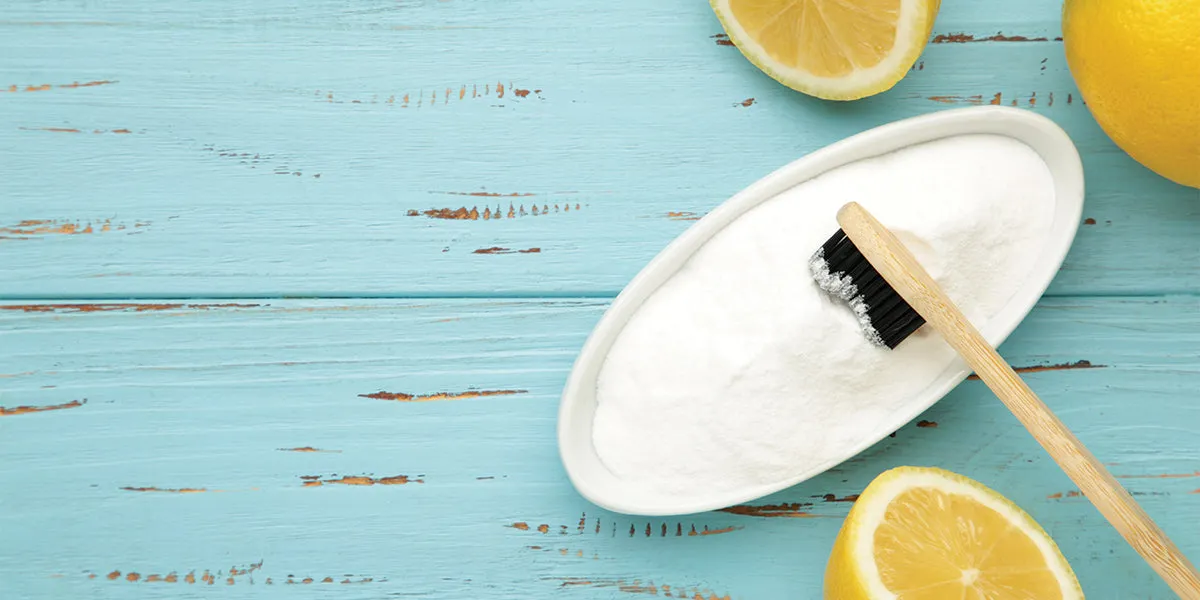
Professional teeth whitening performed by a dentist is one of the most effective ways to brighten your smile. These treatments use a higher concentration of bleaching agents, such as hydrogen peroxide, to penetrate the enamel and change the intrinsic color of the teeth. The procedures are typically performed in a dental office and can offer dramatic results in a relatively short time. Dentists can also provide customized treatments tailored to your specific needs and tooth sensitivity. Professional whitening ensures that the bleaching process is safe, as dental professionals carefully monitor the teeth and gums. While professional whitening can be more expensive than DIY methods, the results are usually more significant and long-lasting. This also gives you the opportunity to get a dental exam and professional cleaning to maintain the health of your teeth.
Over-the-Counter Whitening Products
A variety of over-the-counter teeth-whitening products are available, offering a convenient and cost-effective way to whiten teeth at home. These products include whitening toothpaste, strips, gels, and mouthwashes. Whitening toothpaste typically contains mild abrasives and/or low concentrations of hydrogen peroxide to remove surface stains. Whitening strips, gels, and mouthwashes contain higher concentrations of bleaching agents, providing more noticeable results. It is important to follow the instructions carefully when using over-the-counter products to avoid any potential side effects. Consult your dentist to determine the most effective and safe over-the-counter options for your specific needs. While these products are generally safe, they might not deliver the same dramatic results as professional treatments.
Maintaining a Bright Smile
Maintaining a bright smile involves consistent oral hygiene practices, along with making thoughtful dietary choices. These habits work together to prevent stains and keep your teeth looking their best. Establishing a routine that you can maintain long-term is crucial for achieving lasting results. These practices help to protect your teeth from staining and maintain the effects of any whitening treatments. This helps ensure that you can enjoy a healthy, bright smile for years to come. The combination of good habits is the key to maintaining a confident, radiant smile.
Oral Hygiene Practices

Consistent and thorough oral hygiene practices are essential for maintaining a bright smile. Brush your teeth at least twice a day for two minutes each time, using a fluoride toothpaste. Floss daily to remove plaque and food particles from between your teeth. Use mouthwash to rinse away bacteria and freshen your breath. Regular dental checkups and cleanings are also crucial for removing plaque, tartar, and surface stains that brushing and flossing might miss. Your dentist can also identify and address any potential oral health problems early on. Following these practices will help you maintain a bright and healthy smile, improve your oral health and prevent future problems.
Dietary Considerations
Diet plays a significant role in the appearance of your teeth. Certain foods and drinks can stain the enamel and diminish the brightness of your smile. Minimize your consumption of staining foods and drinks, such as coffee, tea, red wine, berries, and dark sauces. Drink plenty of water throughout the day to help rinse away food particles and prevent staining. Consider incorporating teeth-whitening foods like apples, celery, and carrots into your diet, as these foods help to scrub the surface of your teeth. By making thoughtful dietary choices, you can help to prevent stains and maintain the results of any teeth-whitening treatments.
